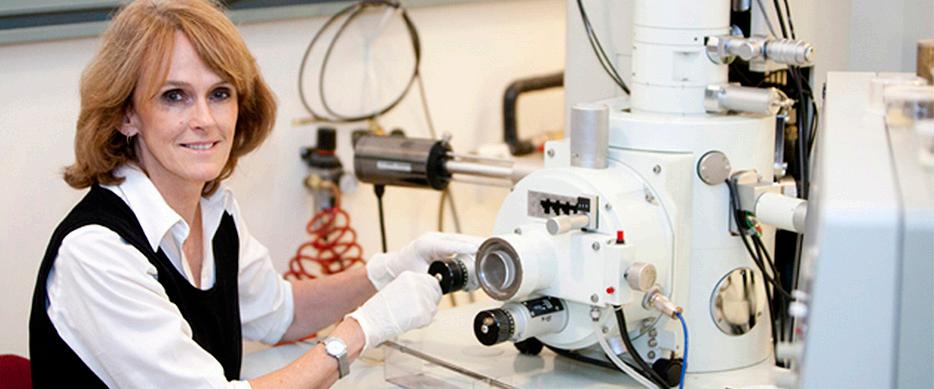
3 minute read
Women in the Industry
Dr Cathy Foley Source: CSIRO
Dr Cathy Foley is unstoppable. After thirty five years of scientific excellence, she is taking on perhaps her biggest feat: harnessing talent from across more than 3500 scientists, working on hundreds of different projects, with thousands of different partners – all inside the one organisation.
As Chief Scientist for Australia’s national science agency, Dr Foley is at the forefront of CSIRO’s focus on solving Australia’s greatest challenges, at a pace and scale that will have sustainable, long-term impact. She said it requires fully embracing the ideas, insights, knowledge and creativity from all CSIRO’s people, as well as the many partners they work with, domestically and internationally.
“We are facing a range of seemingly intractable problems, including a remote and harsh environment, a growing and aging population, biosecurity threats to our environment and vulnerability to the impacts of climate change,” she said.
“In addition, although we have excellent science metrics nationally, that doesn’t always translate into innovation by industry. In fact, our collaboration between the research sector and industry is the lowest of all OECD countries.”
Dr Foley believes the future of science and technology is shaping up that no single research group or organisation can solve these challenges alone. More multidisciplinary and inter-disciplinary work will be required to build a prosperous future for our nation. “Innovation is at the heart of economic growth and prosperity, and science and technology is at the heart of innovation. That’s why collaboration is so vital. We need to be working on fewer, bigger things to really have impact at scale and solve some of our greatest challenges.”
Dr Foley is drawing on the organisational expertise, across CSIRO, to map out key transformative ‘cross cutting capabilities that Australia needs for the future. This will enable scientists, with shared skillsets, to work across different areas of the organisation, enabling greater focus and efficiencies. They range from biological technologies, such as genomics and synthetic biology, to physical technologies, such as advanced materials and quantum, and even social capabilities such as social science and Indigenous knowledge.
Dr Foley has always embraced challenges and opportunities. She says coming from a large family and having older brothers helped her develop a thick skin, and does not let too much bother her.
Looking back on her extraordinary career, it is hard to imagine now, but at first she thought she would be a teacher – something she still considers as critical for the nation, but was not really for her. There were very few, if any, female role models at that time.
It was not until university, where her eyes were opened to the possibility of a life in research as a scientist. Her professor, Heather Adamson, boldly stated one day that she was not going to be a teacher, that she was going to be a first-class honours student, win a scholarship, do a PhD and go on to work as a scientist.
“It was her belief in me that stirred something inside, and I went on to accomplish everything she said!”
Dr Foley says of the obstacles she faced as a female scientist, one of the biggest was to be taken seriously, especially paving the way as the first female research scientist hired in a department. Dr Foley remembers one story when she was installing a piece of new equipment.
“The sales rep said, ‘I’ve never seen a woman with a screwdriver before’. Those types of comments were part of life as a female scientist then.”
Over the years, she dealt with many more challenges, including motherhood and navigating a return to work. Dr Foley and a couple of other CSIRO colleagues took it upon themselves to set up a long-term daycare, and ran it for seven years because there wasn’t one in her local council of northern Sydney at that time.
In hindsight, she acknowledges these moments made her work harder and work smarter and go after what she wanted – which was to be the Chief Scientist of CSIRO. When presented with a challenge, she only seeks out solutions, she does not let challenges stand in her way.
“Australia is an amazing country, that has incredible potential, if we can get all the different parts of the community working together and collaborating to jointly succeed,” Dr Foley said.
“The future of science and technology will be about being ‘open’ – open to working across disciplines, with a diversity of people, both here and from around the world.”
“When we use our full human potential, combined with our future science and technology, we can solve our greatest challenges and create a prosperous future for all Australians.”











